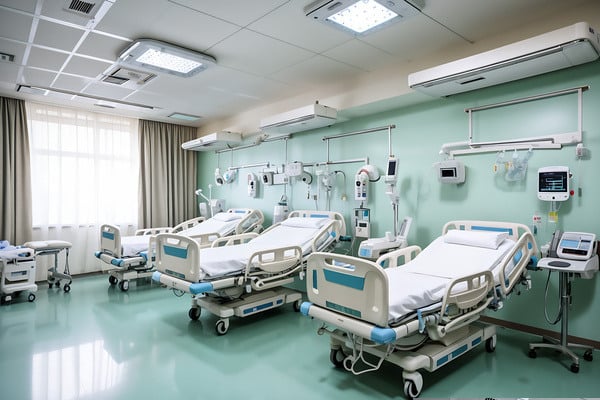How Ball Screws Are Used in Medical Device Applications
Ball Screws in Medical Device Applications

In the ever-evolving landscape of medical technology, precision and reliability are extremely important. From diagnosing diseases to performing intricate surgeries, the machinery that powers these life-saving tasks relies heavily on linear motion systems. Among these, ball screws stand out as a key component, offering the accuracy and dependability that medical devices demand.
What are ball screws?
Ball screws are a type of mechanical linear actuator that converts rotational motion into linear motion. They consist of a cylindrical shaft with helical grooves along its circumference and balls that travel up and down these grooves. This design allows for the conversion of rotary motion into precise linear movement.
The ball screw's design offers high efficiency, precision, and reliability, which are very important for many medical and laboratory devices. The ball bearings in the screw provide smooth motion while minimizing friction and wear, making ball screws an ideal choice for applications that require consistent and accurate positioning. Many manufacturers have standard designs of ball screws and some manufacturers can design and manufacture custom designs of ball screws.
Why ball screws in medical applications?
Medical devices operate under some of the most stringent conditions, where minor inaccuracies can have significant consequences. Ball screw meet these demands by offering these benefits:
High precision is extremely important for tasks like imaging, blood pumping, and surgical procedures.
Reliability, ensuring consistent performance, ensuring devices operate safely and effectively.
Durability, allowing them to withstand regular sanitation and heavy usage typical in healthcare settings.
Applications of ball screws in medical devices
Ball screws play very important roles in various medical and laboratory equipment, enhancing their functionality and reliability. From lab instruments to imaging systems, these components ensure smooth, reliable movement, enhancing the performance and repeatability of complex tasks. Below are some examples of how ball screws are used in healthcare applications:
Lab conveying equipment – Ball screws enable smooth and accurate movement of lab instruments, improving the efficiency and repeatability of experiments and diagnostic procedures.
Blood pumping devices – In devices like cardiac surgical units and dialysis machines, ball screws ensure precise blood separation and pumping, which is vital for patient safety and treatment effectiveness.
Digital scanning and X-ray technology – Ball screws drive the motion mechanisms in scanners and X-ray machines, guaranteeing consistent and accurate positioning for high-quality imaging results.
Radiotherapy equipment – Linear accelerators used in radiotherapy rely on ball screws for exact radiation delivery, targeting cancerous tissues while sparing healthy surrounding areas.
PET, MRI, and CT machines – Ball screws control the movement of patient beds in imaging tunnels, ensuring smooth and accurate positioning for detailed scans.
Given their role in the performance of blood pumping devices, diagnostic imaging technologies, and radiotherapy equipment, ball screws must be designed with the unique requirements of medical applications in mind.
Design considerations for ball screws in medical applications
When integrating ball screws into medical devices, designers must address specific challenges to meet the unique demands of the healthcare industry, such as lead accuracy and load conditions.
Lead accuracy
Lead accuracy defines how precisely the ball screw moves per revolution. Standards set by ISO and DIN make sure that ball screws meet the necessary tolerances for medical applications, with higher precision levels required for tasks demanding exact positioning.
Load conditions
Medical devices often encounter varying dynamic loads within compact spaces. Designers must evaluate static and dynamic loads, including thrust, tension, compression, and side loads, to select ball screws that maintain performance without stretching or squeezing under pressure.
Conclusion
Ball screws are indispensable in modern medical devices, offering the precision, reliability, and efficiency necessary for life-saving technologies. Metric ball screws and imperial ball screw designs are available form most manufacturers. By understanding the key factors in selecting and designing ball screws, manufacturers can improve the performance and safety of their medical equipment, ultimately improving patient outcomes. As the demand for advanced medical technologies continues to grow, the role of ball screws in ensuring precise and dependable motion control will only become more important.


